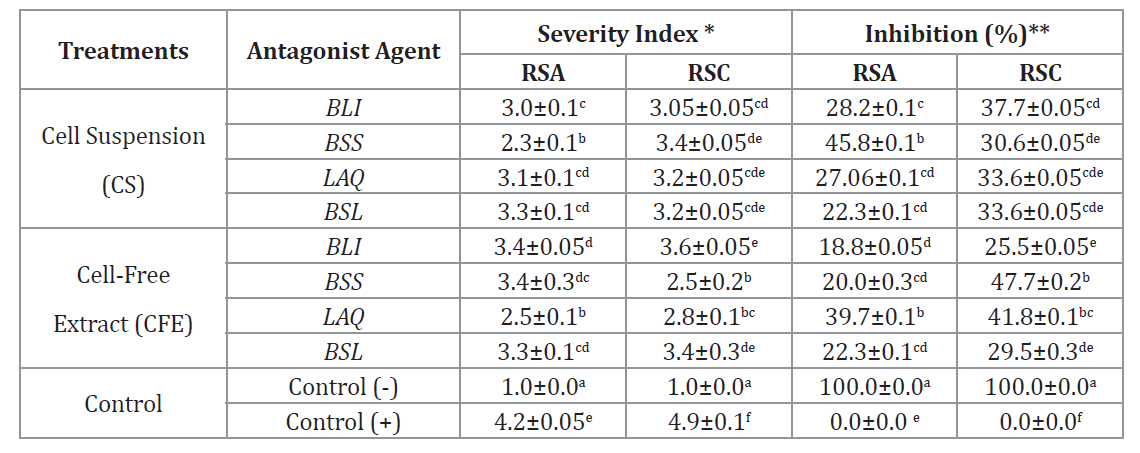Postharvest control of Rhizopus stolonifer on blackberry (Rubus fruticosus) by blackberry native crop bacteria
Keywords:
Postharvest berries, Biocontrol, Cell-free Extract, Leifsonia, Bacillus, Rhizopus stolonifer, Soft rotAbstract
The potential of four native bacterial strains of blackberries cv. Brazos (Rubus fruticosus): Bacillus subtilis (BSS), Bacillus subtilis (BSL), Bacillus licheniformis (BLI) and Leifsonia aquatica (LAQ), was evaluated for the postharvest control of soft rot caused by Rhizopus stolonifer in blackberry fruits. The fruits were treated with cell suspensions (CS) and cell-free supernatants (CFE) from each bacterial strain and were infected with two strains of R. stolonifer (RSA and RSC). The severity and inhibition percentage of the disease were determined. Additionally, the inhibition by siderophores and the inhibition percentage of R. stolonifer spore germination were analyzed as possible control mechanisms. The CS of BSS inhibited RSA by 45.8%, followed by CFE of LAQ which controlled the same strain by 39.7%. The CS of BLI inhibited RSC by 37.7%, whereas the CFE of BSS and LAQ controlled it by 47.7 and 41.8%, respectively. All bacterial strains inhibited RSA and RSC by siderophores production (38.7 to 48.6 %) and the inhibition of spore germination of RSC was higher than 93% after 48 h. This work is one of the first to report R. stolonifer control by native bacteria CS and CFE, particularly LAQ in postharvested blackberry fruits. These results show the combination of mechanisms used by bacteria to control both R. stolonifer strains.
Downloads

Downloads
Published
How to Cite
Issue
Section
License
Aquellos autores/as que tengan publicaciones con esta revista, aceptan las Políticas Editoriales.










.jpg)




